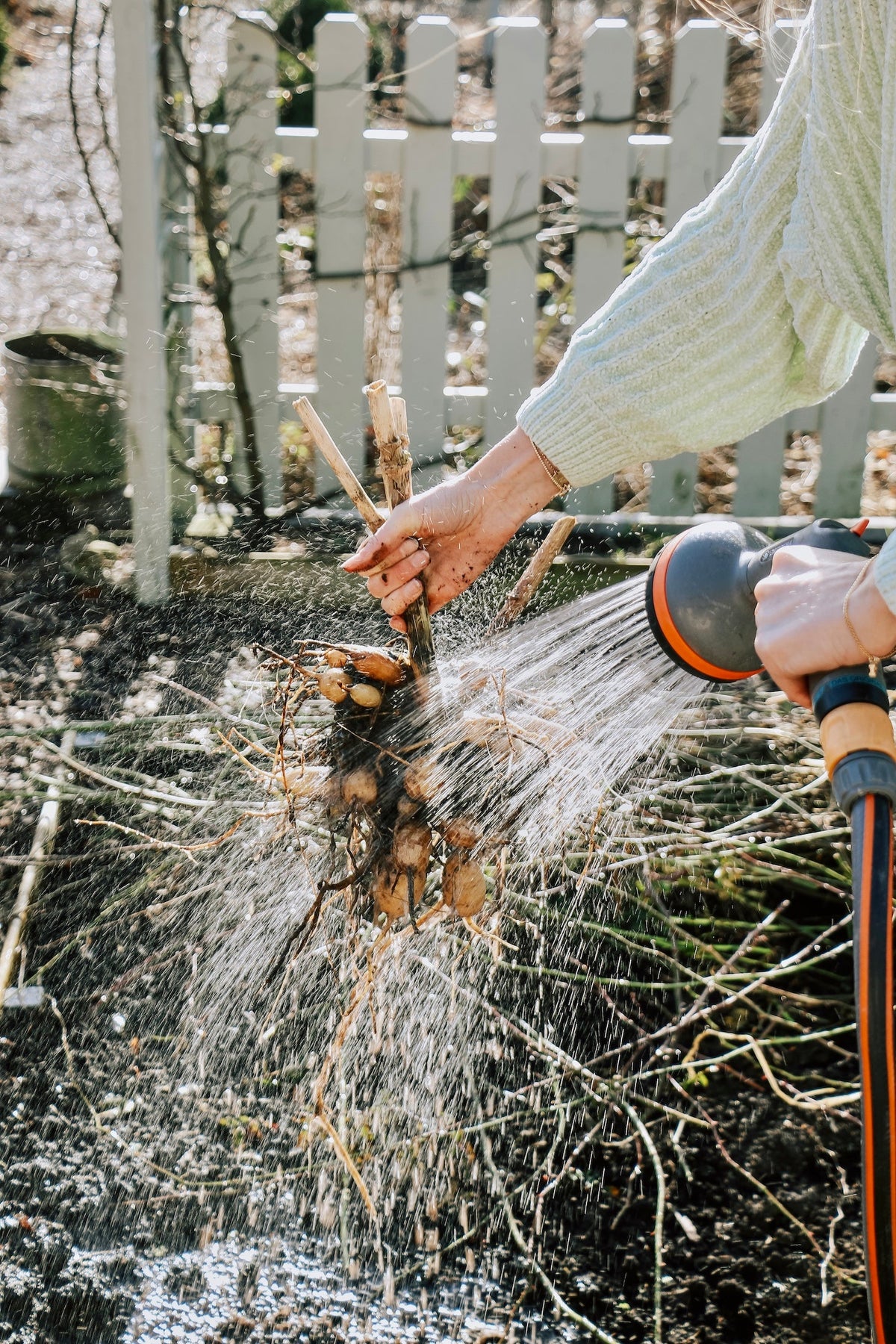
3 tips to make the most of rainwater in your garden
|
Tijd nodig om dit artikel te lezen: 3 min
|
Tijd nodig om dit artikel te lezen: 3 min
Need more water? Although spring has been underway for a while, April is pulling out all the stops and the rain continues to pour down every day. That might be a bit depressing for the mood, but all that rainwater can also be quite useful. Especially if we get longer periods of dryness again in the summer.
I'll give you three tips on how to use rainwater effectively.
Installing a rainwater tank.
If you want to use the big guns, you can have a prefab rainwater tank installed in your garden.The advantage: you can collect thousands of liters of rainwater to use later for your washing machine or as watering water for your plants. The big disadvantage, however, is that it requires quite a bit of effort to install a rainwater tank, both in terms of budget and work.
Using a rain barrel.
A more budget-friendly way to collect rainwater than a rainwater tank is a rain barrel. You can, for example, attach a gutter to your greenhouse or garden shed and collect that water in a rain barrel. In it, you can easily collect 200 to 300 liters of rainwater. Handy for filling your watering can and watering plants in the summer. With such an above-ground reservoir, you do need to be careful during prolonged frost.
You can also easily provide the greenhouse with rainwater by collecting packs of snow outside and dumping them in the greenhouse. The meltwater then steadily drips into the ground. Of course, it has to snow quite a bit in winter for this.
You can also collect rainwater and use it directly in your garden ... or in the greenhouse.
In the greenhouse.
The soil in the greenhouse has had a rest period and could use some new nutrients after the winter. Fill a few watering cans and give that rainwater to the earth in your greenhouse. You can repeat this for a few days without any problem.
In the garden.
Rainwater that you collect on the roof of, say, your garden shed can also be sent straight into the garden, for example through a downpipe in which you make holes or with a drip hose.
In addition to collecting rainwater and using it yourself, you can also let your garden do the work.Provide a few corners where water is definitely king.
A pond seems like the most obvious step. Not only do you have something beautiful to look at, but you also attract a lot of animals.
Have you considered a green roof yet? It works like a sponge that holds rainwater and at the same time insulates your roof. It also requires an investment, because such a green roof weighs quite a bit, so it's best to let an expert handle it.The plants on a green roof are at least selected for their ability to retain water and provide insulation.
Another option is a wadi. Wadi stands for water discharge through drainage and infiltration and is actually a lower part of the garden where you let the downpipe end. In wet periods, you then get a kind of marsh. Due to the slow way in which the rainwater seeps in, the soil has time to absorb all that moisture well and store water sustainably. "Wadi" is actually an Arabic word and refers to riverbeds in desert areas.
Did you know that we also have a well-stocked YouTube channel? With more than 450 videos, we have a large database of information. Be sure to check out YouTube and subscribe, so you'll stay updated on the latest videos.
In this video, Angelo explains how you can easily make a water reservoir with terracotta pots. I'm sorry, but the text you provided doesn't seem to be in Dutch. It appears to be a series of HTML tags without any visible content to translate. Could you please provide the Dutch sentences you want translated?

